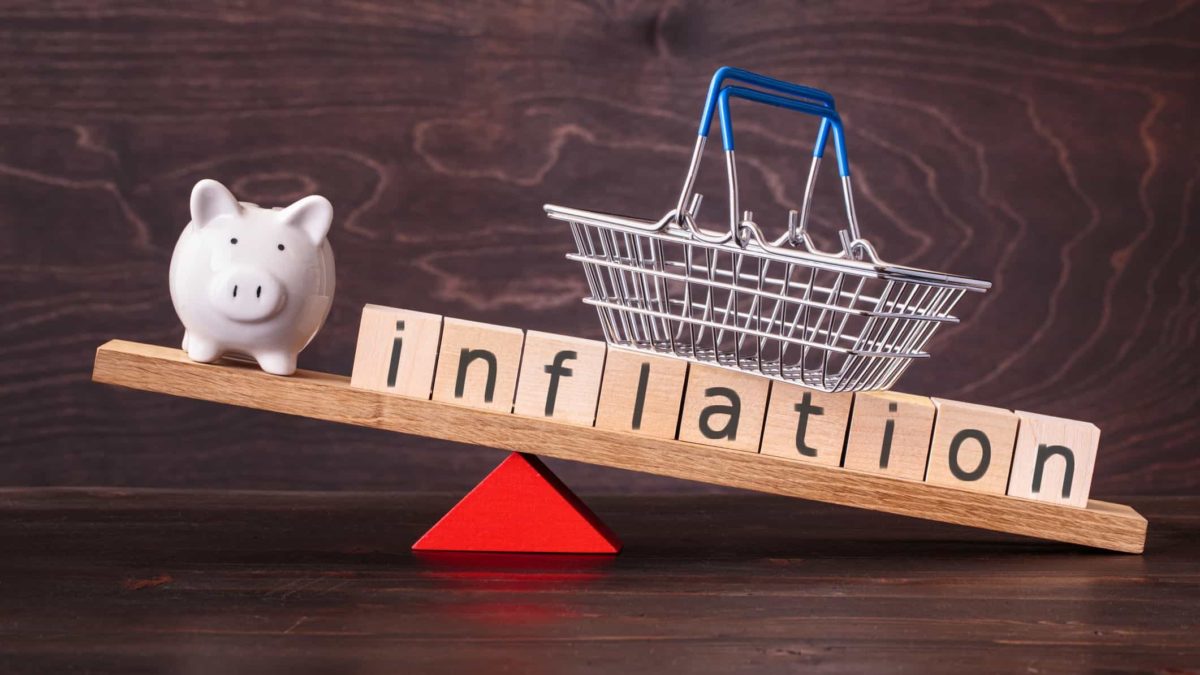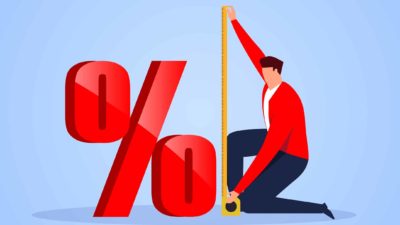Inflation is a theme triangulating investor groups amid the latest statistics, which shows inflation rising at its fastest pace in over 10 years.
Data from the Reserve Bank of Australia (RBA) shows the primary measure of inflation, the Consumer Price Index (CPI), rose by almost 1% this quarter, and 3% in the 12 months to September 2021. But more on that later.
Thankfully Australia is faring better than its US counterparts, where inflation rose to 6.2% for the quarter – its highest rate of change in over 25 years.
As such, market participants are now seeking avenues to park their hard earned capital without the looming threat of inflation eating into investment returns.
Here we provide an in-depth understanding of inflation and what it means for investors, given the current narrative.
Plus, find out why Rhett Kessler of Pengana Capital Group reckons shares in Woolworths Group Ltd (ASX: WOW) are an effective hedge against inflation.
What is inflation?
There are two sides to the meaning of inflation. The first is centred around the prices of goods and services in the economy.
In this regard, inflation is defined as the progressive increase in the cost of general goods and services. For Australia, the 'core' measure of inflation is the CPI.
The CPI is just a basket of consumer goods and services that tries to mimic purchases of everyday consumers.
It includes things like food staples, fuel prices and clothing, but excludes a whole subset of expenses like energy, for instance.
Consequently, the RBA actually has a whole suite of measures to report the level of inflation in the economy.
For example, other indicators show 'producer prices' increasing 1.3% this quarter and export prices gaining 8.5%, whereas 'food inflation' is also up 1.3%.
It is also one of the RBA's roles to maintain inflation within a range of 2–3%, which it defines as a 'healthy' increase in prices over time.
Loss of purchasing power
The other facet of inflation is what we call the loss of 'purchasing power' of a currency.
Let us explain using a broad example. Let's assume a hamburger cost $5 in 2018. With inflation at 3% in the next year, the price of our burger is now $5.15.
Imagine that trend continued for the next two years. Now it's 2021, and we are paying $5.46 for our hamburger.
What happened? Unfortunately, the hamburger isn't any more delicious or hasn't come with an extra side of chips.
Obviously, the input costs to our burger went up, due to the cost of goods also rising – a consequence of inflation.
But here's what many people tend to gloss over. That $5 we had in 2019 – has effectively lost value, because it can't purchase the same amount of product today as it did two years ago.
In fact, it can only purchase a fraction of the same amount. We now need to pay an additional 9% to get the exact same burger. This is what is meant by a loss in purchasing power.
In fact, The Economist's Big Mac Index is one interesting way to visualise this. It tracks the cost of a McDonald's Big Mac burger in each country year to year, to see how different currencies stack up with their purchasing power.
So in short, inflation measures the increase in prices of an economy but also causes the value of a dollar to decrease over time.
What causes inflation?
There are a number of contributing factors that build up inflation, but the premise comes down to the unseen hands of demand and supply.
Simple economics teaches us that when the aggregate demand of a good or service outpaces its supply, prices increase to reflect this dynamic.
The most obvious example of this in recent times has been government induced lockdowns from COVID-19.
Put simply, even though we were sent into global lockdowns, consumers didn't slow their demand for purchases these past 2 years – it was the supply side that was shut off.
Workers couldn't even get to their place of work in order to produce the goods consumers wanted to buy.
This has led to significant supply chain and manufacturing bottlenecks in just about every industry in 2021, and prices have shot up across the board in response.
Doesn't 'printing money' cause inflation too?
You might hear the term 'money printing' being thrown around – but rest assured, the government isn't out here churning out $50's for you and me to line our pockets with.
The term is actually called "quantitative easing (QE)", and refers to actions taken by the RBA to prop the economy up in frothy times.
Basically, QE is a cocktail of ultra-low interest rates and the RBA flooding the economy with currency reserves (cash, in other words) by purchasing assets, in order to prevent a full-scaled economic blowout. But it doesn't mean printing more tangible banknotes.
Zimbabwe did just that many years ago and remains the best case example of why we can't just open up the printing press for currency. At its worst, inflation was over 79.6 billion – yes, billion – percent in 2008, and it once cost over 1 million Zimbabwe dollars just to buy a loaf of bread.
Regardless, the RBA's actions ensured there was plenty of free cash floating around during our recent spate of lockdowns.
But as Newton said, for every action, there is an equal and opposite reaction.
And the net reaction to all of these actions has been that aggregate demand has significantly outmatched the supply of goods and services in 2021.
Not only that, QE programs have created the perfect environment for asset prices to shoot up – that includes shares and real estate, for example, two distinct out-performers this year.
As such, many experts believe that QE programs around the world have set the stage for a high inflation regime, by allowing demand to outmatch supply, and by driving up asset valuations.
What does inflation mean for investors?
There are many sides to this debate, however, the general consensus is that inflation is a net negative for investors.
Basically, inflation reduces the future value of investment returns, including capital gains and dividend income.
If you expect to receive dividends out in the future, you can also expect inflation to lower the future value (purchasing power) of those dividends as well.
And if inflation is at 3% p.a. for example, one can go ahead and subtract 3% from their overall investment return each year as a result.
However, in the immediate term, inflation can also be good for company earnings – which does bode in well for share prices.
Long-term, however, a level of inflation that exceeds the RBA's targets of 2–3% is considered a negative for investors. We want to keep our returns and avoid seeing the value of any future returns diminish.
So why then, are some experts looking to shares such as Woolworths Group Ltd (ASX: WOW) to protect against inflation?
A 'hedge' against inflation
Rhett Kessler of Pengana Capital was recently quoted on Livewire as stating that Woolworths is "the ultimate inflation hedge. When you're moving boxes at a gross margin of about 35%, the more boxes you move, the more money you make if there is inflation".
It is for this reason that Kessler reckons Woolworths is an effective hedge to inflation because it won't be as materially impacted by prices going up. In fact, it could even be a beneficiary, according to the expert.
For reference, an inflation hedge is simply an asset or a purchase that protects against its eroding impact on investment returns.
Not only that, but supermarkets have traditionally fared well in times of inflation, according to Bloomberg Intelligence. That's because any raw increase in food prices can be passed directly onto customers, thereby boosting company earnings.
And as Kessler submits, in this situation Woolworths' would pass the cost on with the same gross margin rate of 35%, creating a compounding effect to the supermarket giant's earnings profile.
With that in mind, investors may want to start thinking of similar ways to hedge against the effects of inflation and seek similar expert opinions in doing so.
At the time of writing, Woolworths shares have climbed 18% in the past 12 months, well ahead of the inflationary figure of 3%.
Whether it is the 'ultimate' inflation hedge is yet to be seen, however, Kessler recommends Woolworths as a buy, and also likes CEO Brad Banducci's management style to support his case.









